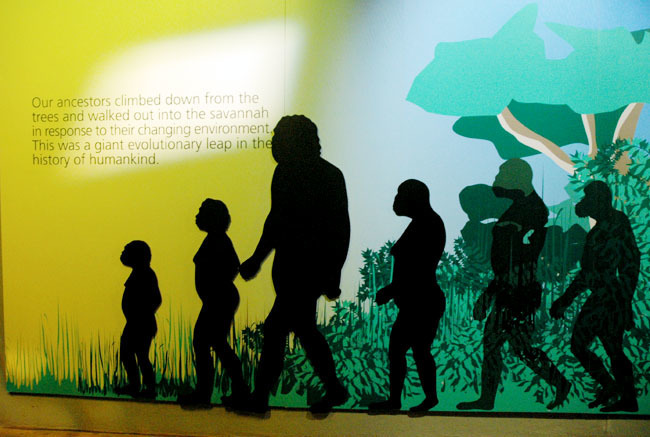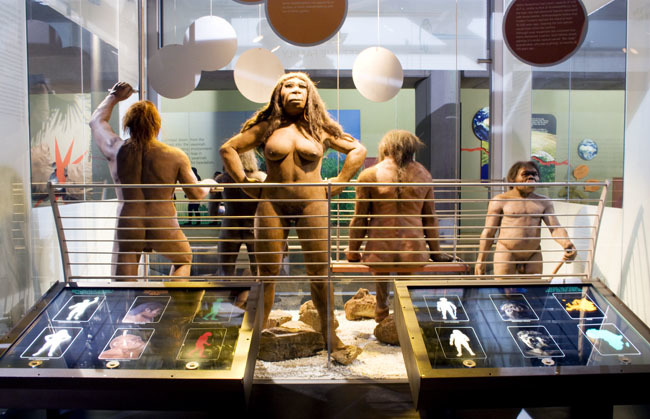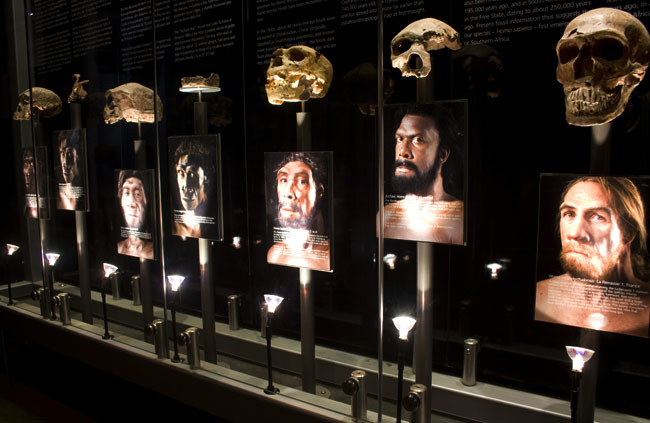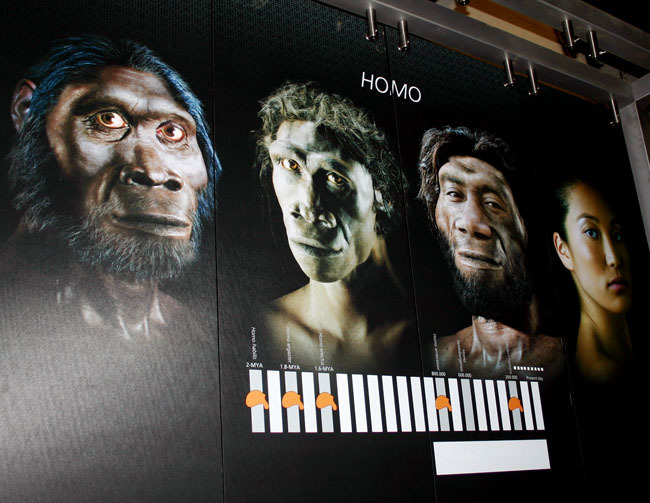Evolution – Photo essay of the week
This week’s photo essay looks at the theory of evolution using the Maropeng exhibition as a backdrop. Charles Darwin (1809-1882) is world-renowned for his theory of evolution. In his book The Origin of Species by Means of Natural Selection, Darwin argued the case for natural selection – that over time creatures which are able to adapt biologically to changes in their environments (in other words, evolve) survive, while those that don’t adapt become extinct.
It’s only in the past 50 years or so that the theory of evolution has received wide-scale acceptance. Anatomical indications which support the concept of evolution can be seen in hominid fossils from the Sterkfontein Caves and other sites in the Cradle of Humankind.

The hominid family tree has a large number of branches. Although researchers agree on the general trends of hominid evolution, the relative scarcity and fragmentary nature of fossils and time gaps in the fossil record leave room for debate.

The development of the brain enabled hominids to make and use tools and fire, communicate using language, develop culture and society, adapt to new environments and, finally, to become self-aware and creative.

In the 19th century, zoologists began to theorise about the evolution of humans from ape-like ancestors. This picture shows an example of the evolution of the genus known as Homo, in which we as Homo sapiens belong. There have been many species in the human family tree belonging to the genus Homo in the past 2.3-million years or so.

Modern humans are grouped together with all earlier species of the zoological family Hominidae as hominids. We are the most recent branch of a family tree that over millions of years has included dozens of hominid species. But we – Homo sapiens – are the only hominids still living today. We have been around for only about 200,000 years. Our family tree is relatively young. Hominids appeared only about 7-million years ago. By comparison, the last dinosaurs died out 65-million years ago. The Earth was formed about 4.6-billion years ago and the universe was born about 14-billion years ago.

The genus Homo includes not only Homo sapiens, but also many earlier species of Homo that are now extinct, including Homo habilis, Homo ergaster (in Africa), Homo erectus (in Europe and Asia), Homo antecessor, Homo heidelbergensis and Homo neanderthalensis (in Europe).
If you would like to see more pictures of Maropeng, visit our Flickr group or our Facebook fan page.